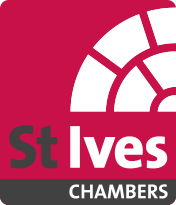International Women’s Day 2019: A proposal for change to tackle the confidence gender gap
As part of International Women’s Day on 8th March 2019 and with headlines earlier this year stating fewer female barristers were applying for silk, Elizabeth Isaacs QC provides her thoughts on how the Bar can improve the balance in gender gap.
How to make a positive difference in achieving equality for women throughout their careers at the Bar: a proposal for change to tackle the confidence gender gap
The gender gap in people being called to the Bar has finally equalised over the last decade.[1] Equality for women at the Bar should therefore inevitably include equality of opportunity in reaching the acknowledged top of the profession, namely, achieving silk.
However, statistics show that women still fall far behind men in relation to silk. It is not just that fewer women achieve silk (just 27% of successful candidates in 2016/2017[2]), but also that women are disproportionately represented in even applying – the percentage of women applicants was still only 22% of total applications in 2016/2017.[3] There is still an obvious trend of gender imbalance in applications to reach the very top of the profession leading to unfulfilled personal potential as well as perpetuating inequality at the Bar.
My hypothesis, based on experience, is that the pattern of silk applications is caused by a confidence gender gap[4] at the Bar, and that one of the most significant barriers to women applying for silk is women’s lack of belief that they meet the required competencies and/or women feeling insufficiently confident to risk applying until they believe they are 100% ready. An early, targeted approach to close such a confidence gap is an easily achievable measure that would make a real and positive difference in achieving equality of opportunity for women at the Bar.
Most candidates for silk don’t succeed at first attempt, so the optimum time to start applying for silk is at least two years before a candidate thinks he or she is ready. Given the QCA’s requirement to demonstrate excellence for the previous 2-3 years in the supporting portfolio of evidence, this means that prospective candidates need to start preparing to apply at least 5 years in advance. So, in order to optimise prospects of success, women actually need to start thinking about preparing to apply for silk at least 7 years in advance – which is around the 10-12 years call stage.
In my experience, women juniors would – mistakenly – regard contemplation of a future silk application at 10 years call as far too early. This partly bears out the findings from research into the psychology of leadership and diversity confirming that women are more than twice as likely to be shrewd and vigilant about risk than men[5]. But research has also long confirmed the relationship between female confidence and competence; despite no difference in quality of performance, men consistently overestimate their abilities and performance, while women underestimate both.[6]
My proposal is therefore for a formal rolling 5 year programme automatically targeted at women junior barristers when they reach the stage of 10 years call (on an automatic ‘opt-in’, optional ‘opt-out’ basis) specifically addressing gender differences in professional confidence. Such a programme could include a combination of one-to-one support via regular mentoring sessions with linked women mentors (both internal and external to the Bar), a self-directed online learning programme, and a regular programme of closed/invitation-only seminars.




